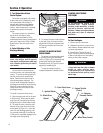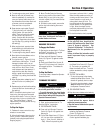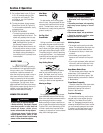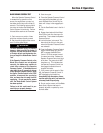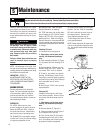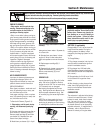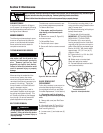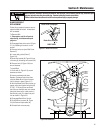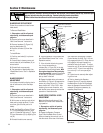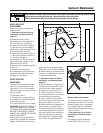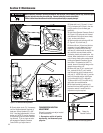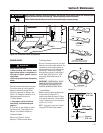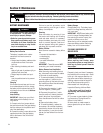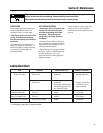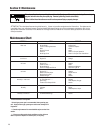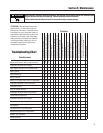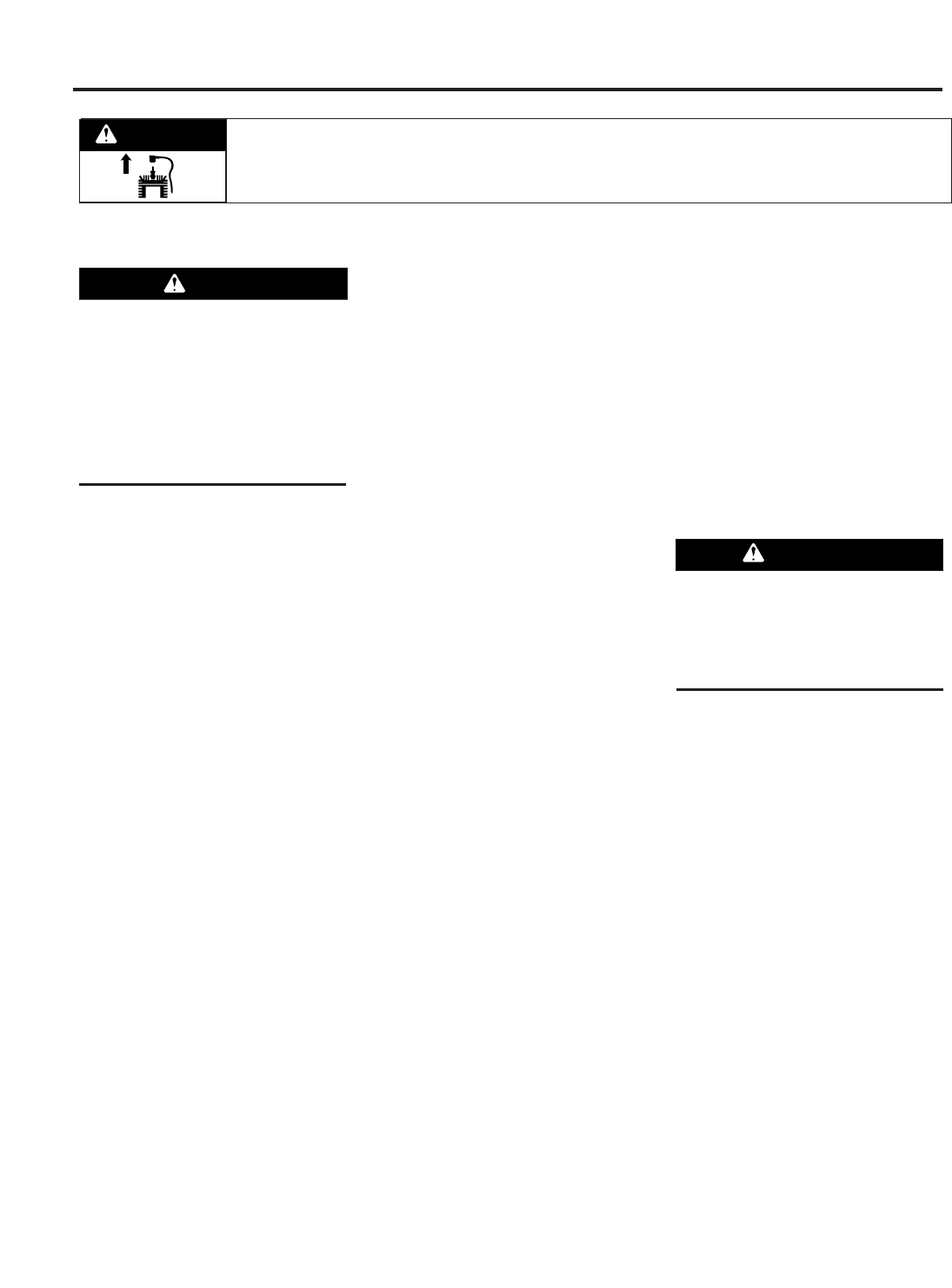
24
Section 5: Maintenance
BATTERY MAINTENANCE
Battery Care in Service
The battery is sealed and is mainte-
nance-free. Acid levels cannot be
checked.
• Always keep the battery cables and ter
minals clean and free of corrosive
build-up.
• After cleaning the battery and termi-
nals,
apply a light coat of petroleum jelly or
grease to both terminals
• Always keep the rubber boot posi-
tioned
over the positive terminal to prevent
shorting.
Charging
If the tractor has not been put into use
for an extended period of time, charge
the battery with an automotive-type 12-
volt charger for a minimum of
one hour
at six amps.
Jump Starting
IMPORTANT: Never jump your tiller’s
dead battery with the battery of a run-
ning vehicle.
1. Connect end of one jumper cable to
the positive terminal of the good battery,
then the other end to the positive termi-
nal of the dead battery.
2. Connect the other jumper cable to the
negative terminal of the good battery,
then to the frame of the unit with the
dead battery.
Failure to use this procedure could
cause sparking, and the gas in either
battery could explode.
Cleaning
Clean the battery by removing it from
the tractor and washing with a baking
soda and water solution. If necessary,
scrape the battery terminals with a wire
brush to remove deposits. Coat termi-
nals and exposed wiring with grease or
petroleum jelly to prevent corrosion.
Battery Failures
Some common causes for battery failure
are:
• incorrect initial activation
• undercharging
• overcharging
• corroded connections
• freezing
IMPORTANT: These failures are NOT
covered by your tractor’s warranty.
Battery Removal and Installation
When removing and installing the bat-
tery, disconnect and connect the cables
in this order to avoid sparking:
1. To remove the battery, first discon-
nect the negative (-) cable from the
grounding screw on the back of the bat-
tery bracket post. Bend the cable away
from any metal parts.
2. Disconnect the negative (-) cable
from the negative (-) battery post.
3. Disconnect the positive (+) cable
from the positive (+) battery post and
bend it away from any metal parts.
Cover the cable terminal with its rubber
boot.
4. Remove the battery clamp.
5. To install the battery, reverse the
above steps. Be sure that the battery
posts face to the rear of the tiller and
that the positive (+) post is on the left
side as you face forward from the han-
dlebars.
Battery Storage
Charge battery fully. The battery loses
some of its charge each day when the
unit is not used.
IMPORTANT: NEVER store battery with-
out a full charge. Recharge battery be-
fore returning to service or every two
months, whichever occurs first.
When storing unit for extended periods,
disconnect battery cables. Removing
battery from unit is recommended.
CLEANING UNDERSIDE OF
MOWER DECK
Frequently check, and clean if necessary,
the underside of the mower deck. Grass
build-up in this area can affect the cut-
ting performance. Before inspecting or
cleaning, make sure that the engine is
shut off and the spark plug wire is
disconnected from the spark plug.
Inspection/Cleaning of Mower Deck:
1. Stop engine, wait for all parts to
stop moving, and disconnect spark
plug wire.
2. Tip mower on rear wheels by follow-
ing instructions "Tipping Mower For
Service" in this Section.
3. Use a plastic or metal scraper to
remove grass build-up from deck or
blades.
Mower blades are sharp.
When working near blades, wear
heavy leather gloves or wrap blades in
thick rags to protect yourself from the
sharp edges.
WARNING
Before inspecting, cleaning or servicing the machine, shut off engine, wait for moving parts to stop, disconnect spark
plug wire and move wire away from spark plug. Remove ignition key (electric start models).
Failure to follow these instructions can result in serious personal injury or property damage.
WARNING
Use extreme caution when working on
or near batteries. To help prevent per-
sonal injury or property damage:.
• Batteries generate explosive gases.
Keep sparks and flames away from
the battery at all times. Ventilate the
area when charging or using the bat-
tery in an enclosed area.
DANGER



